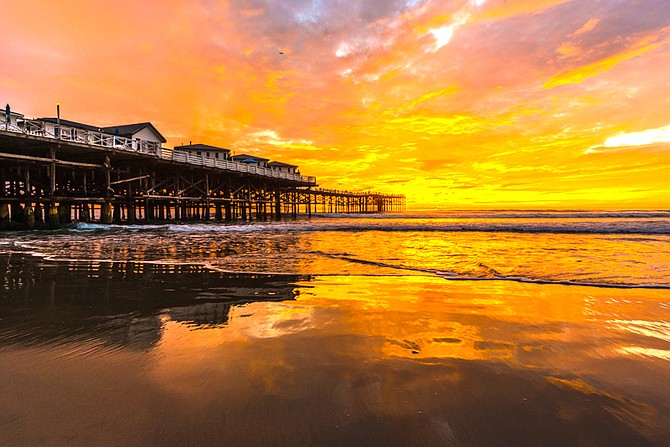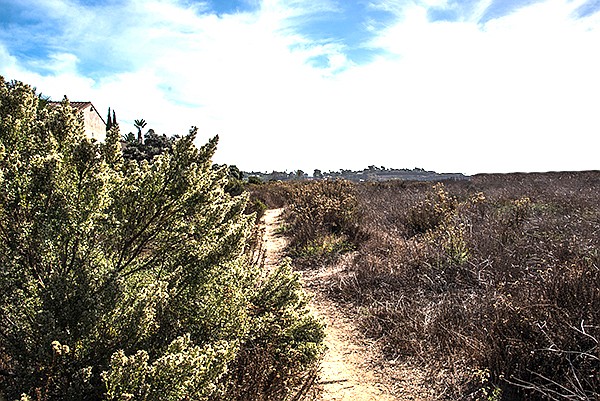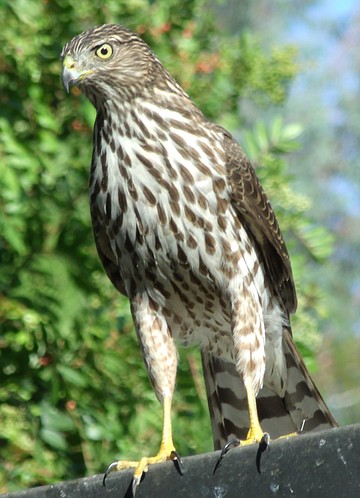 Facebook
Facebook
 X
X
 Instagram
Instagram
 TikTok
TikTok
 Youtube
Youtube

The time of sunset changes most rapidly this time of the year. This is mainly because the sun is swinging rapidly south along the ecliptic (its apparent path through the background stars). From the latitude of San Diego, the sun is now setting about 75 seconds earlier every day (equivalent to about 9 minutes earlier per week), and its setting position along the horizon shifts southward about one-half degree per day.

San Diego’s coastal sage-scrub vegetation is now at the very nadir of its growth cycle. Shades of gray and yellow have replaced the bright greens that carpeted many of the still-wild coastal hillsides up until April or May of this year. Sometime within the next several weeks, the first substantial autumn rain will shatter the usual summer drought, and our “summer deciduous” vegetation could bounce back in a matter of days.

Fall migrant birds such as wood warblers can be seen at Cabrillo National Monument and its vicinity on Point Loma, Torrey Pines State Reserve, and other parks and open spaces near the San Diego coast. Cooper’s or marsh hawks and even peregrine falcons may be seen following or pursuing these smaller birds.
The zodiacal light, which can appear as a diffuse, pillar-shaped glow in the eastern sky for up to an hour before dawn, will be quite conspicuous at dark locations this weekend. The subtle glow is caused by the sun’s light reflecting off dust particles floating in space in the plane of our solar system. In the sky, this reflected light appears superimposed along the string of constellations we know as the zodiac and especially those zodiacal constellations closest to the direction of the sun. An old name for this phenomenon is “false dawn” — a good description of the effect under clear and very dark skies.
The above comes from the Outdoors listings in the Reader compiled by Jerry Schad, author of Afoot & Afield in San Diego County. Schad died in 2011.


The time of sunset changes most rapidly this time of the year. This is mainly because the sun is swinging rapidly south along the ecliptic (its apparent path through the background stars). From the latitude of San Diego, the sun is now setting about 75 seconds earlier every day (equivalent to about 9 minutes earlier per week), and its setting position along the horizon shifts southward about one-half degree per day.

San Diego’s coastal sage-scrub vegetation is now at the very nadir of its growth cycle. Shades of gray and yellow have replaced the bright greens that carpeted many of the still-wild coastal hillsides up until April or May of this year. Sometime within the next several weeks, the first substantial autumn rain will shatter the usual summer drought, and our “summer deciduous” vegetation could bounce back in a matter of days.

Fall migrant birds such as wood warblers can be seen at Cabrillo National Monument and its vicinity on Point Loma, Torrey Pines State Reserve, and other parks and open spaces near the San Diego coast. Cooper’s or marsh hawks and even peregrine falcons may be seen following or pursuing these smaller birds.
The zodiacal light, which can appear as a diffuse, pillar-shaped glow in the eastern sky for up to an hour before dawn, will be quite conspicuous at dark locations this weekend. The subtle glow is caused by the sun’s light reflecting off dust particles floating in space in the plane of our solar system. In the sky, this reflected light appears superimposed along the string of constellations we know as the zodiac and especially those zodiacal constellations closest to the direction of the sun. An old name for this phenomenon is “false dawn” — a good description of the effect under clear and very dark skies.
The above comes from the Outdoors listings in the Reader compiled by Jerry Schad, author of Afoot & Afield in San Diego County. Schad died in 2011.
Comments